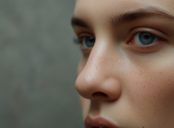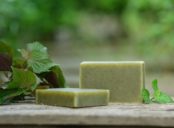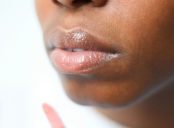Retinol Serum A Comprehensive Guide to This Skincare Marvel

Introduction
Retinol serums have gained immense popularity in the skincare industry for their remarkable anti-aging properties. Derived from vitamin A, retinol serums have become a staple in many people’s skincare routines. In this article, we will delve deeper into the world of retinol serums, exploring what they are, the various types available, their popularity, and the quantitative measurements associated with them.
A Comprehensive Presentation of Retinol Serum

Retinol serum is a skincare product formulated with a concentrated amount of retinol, a derivative of vitamin A. This potent ingredient has proven to be highly effective in reducing the appearance of wrinkles and fine lines, as well as improving skin texture and tone. Retinol serums come in different concentrations, ranging from 0.1% to 2%, with higher concentrations offering more potent results.
There are various types of retinol serums available on the market. Some formulas are combined with other beneficial ingredients such as hyaluronic acid, peptides, or antioxidants to enhance their effects. Popular retinol serums include those from renowned skincare brands like The Ordinary, Skinceuticals, and Drunk Elephant, which have garnered a loyal customer base due to their effectiveness.
Quantitative Measurements of Retinol Serum
When it comes to retinol serums, understanding the quantitative measurements can be crucial for achieving desired results without causing unnecessary skin irritation. The concentration of retinol in a serum is measured in IU (International Units) or percentage. For example, a serum with 0.5% retinol contains 5000 IU per gram of product. It is essential to start with lower concentrations for beginners and gradually increase over time to allow the skin to acclimate to the retinol.
Additionally, it is recommended to apply retinol serums at night as they can cause increased sensitivity to sunlight. Sunscreen should be an integral part of the skincare routine when using retinol serums to protect the skin from harmful UV rays.
Distinguishing Factors Among Retinol Serums
While retinol serums share a common goal of improving the skin’s appearance, they can differ in terms of additional ingredients, formulation, and packaging. Some may contain additional moisturizing agents to combat dryness often associated with retinol usage. Others may be oil-based to provide nourishment to dry or mature skin. Furthermore, the packaging of retinol serums is crucial to ensure stability and efficacy. Airless pump bottles or opaque tubes are preferable to prevent degradation of the retinol due to exposure to light or air.
A Historical Overview of the Pros and Cons of Retinol Serums
Historically, retinol serums were primarily known for their remarkable anti-aging benefits. Their ability to stimulate collagen production and accelerate cellular turnover has made them a go-to solution for combating wrinkles, fine lines, and uneven skin tone. However, it is important to note that retinol can cause initial skin irritation, dryness, and flakiness. This has led to the development of milder retinol formulations, such as those combined with moisturizing ingredients or encapsulated to minimize potential side effects.
Furthermore, there are certain precautions to keep in mind when using retinol serums. Pregnant or breastfeeding individuals are advised to avoid retinol products as they may have harmful effects on the fetus or nursing infant. Additionally, individuals with sensitive skin should exercise caution and consult with a dermatologist before incorporating retinol serums into their skincare regimen.
Conclusion
Retinol serum is a revolutionary skincare product that has revolutionized the anti-aging landscape. Its potent properties and ability to improve skin texture and appearance have made it a favorite among skincare enthusiasts. With a variety of types available, understanding the quantitative measurements and distinguishing factors of retinol serums is crucial for achieving optimal results. While there are historical pros and cons associated with retinol serums, advancements in formulation have addressed many concerns, making it accessible and beneficial for many individuals seeking rejuvenated skin.
By incorporating retinol serums into your skincare routine, you can unlock the power of vitamin A and achieve a radiant, youthful complexion. Understanding the different types, measurements, and historical aspects of retinol serums will guide you in selecting the best option for your specific skin needs. So embrace the wonders of retinol serum and say hello to a smoother, more revitalized appearance.





















